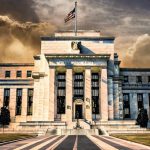
Understanding What Are Speculative Bubbles: Causes and Consequences
Apr 3, 2025
What drives rational individuals to invest in irrational markets? How do prices soar to unimaginable heights, only to collapse spectacularly, leaving devastation in their wake? Speculative bubbles are among the most fascinating and destructive phenomena in financial markets. They seduce investors with the promise of extraordinary returns, only to betray them with catastrophic losses. To understand what speculative bubbles are is to uncover the psychology of greed, fear, and herd mentality that fuels these financial frenzies.
Speculative bubbles are not new. They have occurred throughout history, from the infamous Tulip Mania of the 17th century to the dot-com bubble of the late 1990s and the housing market collapse in 2008. These events are not merely anomalies; they reveal the recurring patterns of human behaviour that distort markets. By examining their causes and consequences, we can learn to identify the warning signs, avoid the traps, and even turn the chaos of bubbles into strategic opportunities.
What Are Speculative Bubbles?
A speculative bubble occurs when the price of an asset rises far beyond its intrinsic value, driven by excessive demand, irrational exuberance, and the belief that prices will continue to climb indefinitely. Bubbles are characterised by rapid price escalation, widespread participation, and a collective disregard for fundamental valuations. They often culminate in a dramatic crash as reality sets in and prices revert to their true value.
The anatomy of a bubble can be broken into several stages. First, there is the **stealth phase**, during which a new idea, product, or market begins to gain traction. This is followed by the **awareness phase**, as more investors take notice and prices begin to rise. Next comes the **mania phase**, where greed and FOMO (fear of missing out) drive speculative buying, pushing prices to unsustainable levels. Finally, the bubble bursts, leading to panic selling, massive losses, and widespread disillusionment.
What makes bubbles so dangerous is the psychological grip they exert on participants. Greed blinds investors to risk, while herd mentality fuels the belief that “this time is different.” Even seasoned professionals can be swept up in the frenzy, abandoning rational analysis in favour of chasing short-term gains. As the Stoic philosopher Seneca observed, “We suffer more often in imagination than in reality.” In bubbles, it is the collective imagination of infinite profits that leads to very real losses.
The Causes of Speculative Bubbles
Several factors contribute to the formation of speculative bubbles, but at their core, they are driven by human psychology and behavioural biases. Understanding these dynamics is key to recognising and avoiding bubbles before they burst.
1. Herd Mentality: People have an innate tendency to follow the crowd, believing that the majority must know something they do not. This behaviour is amplified in financial markets, where the sight of others profiting from rising prices creates a powerful incentive to join the herd. Herd mentality leads to overconfidence and a disregard for risk, as investors convince themselves that “everyone else is doing it, so it must be safe.”
2. Overconfidence Bias: During a bubble, investors often overestimate their ability to predict market movements, believing they can exit before the crash. This overconfidence blinds them to the fact that bubbles are inherently unpredictable, and the timing of their collapse is almost impossible to anticipate.
3. Media and Technology: The role of media in amplifying speculative behaviour cannot be overstated. Sensational headlines, viral social media posts, and influencer endorsements create hype, driving more participants into the market. Technology accelerates this process, making it easier than ever for individuals to invest with just a few clicks, often without fully understanding the risks.
4. Easy Access to Capital: Low interest rates, lax lending standards, and speculative leverage provide the fuel for bubbles. When borrowing is cheap and easy, investors are more likely to take on excessive risk, driving prices higher and higher until the system becomes unsustainable.
5. Cognitive Dissonance: As prices rise, rational doubts may emerge, but cognitive dissonance leads investors to ignore these warning signs. Instead, they seek out information that reinforces their belief in the bubble, dismissing evidence that contradicts their expectations.
Historical Examples of Speculative Bubbles
To understand the consequences of speculative bubbles, we can look to history, which is littered with examples of their rise and fall. Each illustrates the devastating impact of irrational behaviour on markets and individual fortunes.
Tulip Mania (1630s): Often regarded as the first recorded speculative bubble, Tulip Mania saw the price of tulip bulbs in the Netherlands skyrocket to absurd levels. At its peak, a single bulb could fetch as much as a house. When the bubble burst, prices collapsed, leaving many investors bankrupt and disillusioned.
The Dot-Com Bubble (1990s): The rise of the internet promised to revolutionise industries, and investors poured money into tech companies with little regard for profitability. Companies with no revenue achieved multi-billion-dollar valuations, driven by the belief that the internet would create endless growth. When the bubble burst in 2000, the NASDAQ lost nearly 80% of its value, wiping out trillions in market capitalisation.
The Housing Market Collapse (2008): Easy credit, subprime mortgages, and speculative real estate investments created a housing bubble that ultimately triggered the global financial crisis. When home prices began to decline, the highly leveraged financial system crumbled, leading to widespread foreclosures, bank failures, and a severe recession.
These examples show that speculative bubbles are not confined to specific assets or eras. They are a recurring phenomenon, driven by the same psychological forces that have plagued investors for centuries.
Consequences of Speculative Bubbles
The consequences of speculative bubbles extend far beyond individual losses. They can destabilise entire economies, disrupt industries, and erode public trust in financial systems. When bubbles burst, the fallout often includes:
1. Financial Losses: Investors who bought at the peak are left holding assets worth a fraction of their purchase price. These losses can wipe out savings, destroy retirement plans, and create financial hardship for millions.
2. Economic Recession: The collapse of bubbles often triggers broader economic downturns. As asset prices fall, consumer spending declines, businesses cut back on investment, and unemployment rises. The ripple effects can take years to resolve.
3. Loss of Confidence: Bubbles erode trust in financial markets and institutions. Investors become wary of participating in future opportunities, slowing the flow of capital and innovation.
4. Regulatory Backlash: In the aftermath of bubbles, governments often implement stricter regulations to prevent future crises. While well-intentioned, these measures can stifle innovation and create unintended consequences.
Turning Panic into Opportunity: Strategies for Navigating Bubbles
While speculative bubbles are dangerous, they also present opportunities for disciplined investors who understand their dynamics. By recognising the warning signs and adopting a contrarian mindset, you can avoid the pitfalls of herd behaviour and profit from market volatility.
1. Focus on Fundamentals: During a bubble, prices often detach from intrinsic value. By focusing on fundamentals—such as earnings, cash flow, and competitive advantages—you can avoid overpaying for overhyped assets.
2. Diversify Your Portfolio: Diversification reduces the impact of any single bubble on your portfolio. By spreading your investments across asset classes, sectors, and geographies, you can mitigate risk and maintain stability.
3. Set Clear Exit Strategies: If you choose to participate in speculative markets, establish clear exit points based on your risk tolerance and investment goals. Avoid the temptation to “ride the wave” indefinitely, as bubbles can burst suddenly and without warning.
4. Stay Disciplined: Emotional discipline is key to navigating bubbles. Resist the urge to chase rising prices or panic during downturns. By sticking to your strategy and maintaining a long-term perspective, you can avoid being swept up in the frenzy.
Conclusion: Mastering the Psychology of Markets
Understanding speculative bubbles and the psychological forces that drive them is essential for any investor. While bubbles are inevitable, their impact can be mitigated through education, discipline, and a focus on fundamentals. By recognising the warning signs, avoiding the herd mentality, and adopting a contrarian mindset, you can navigate the chaos of bubbles with confidence and clarity.
As Marcus Aurelius once said, “You have power over your mind—not outside events. Realise this, and you will find strength.” By mastering your psychology and approaching markets with a clear, rational perspective, you can transform the dangers of speculative bubbles into opportunities for growth and success.










